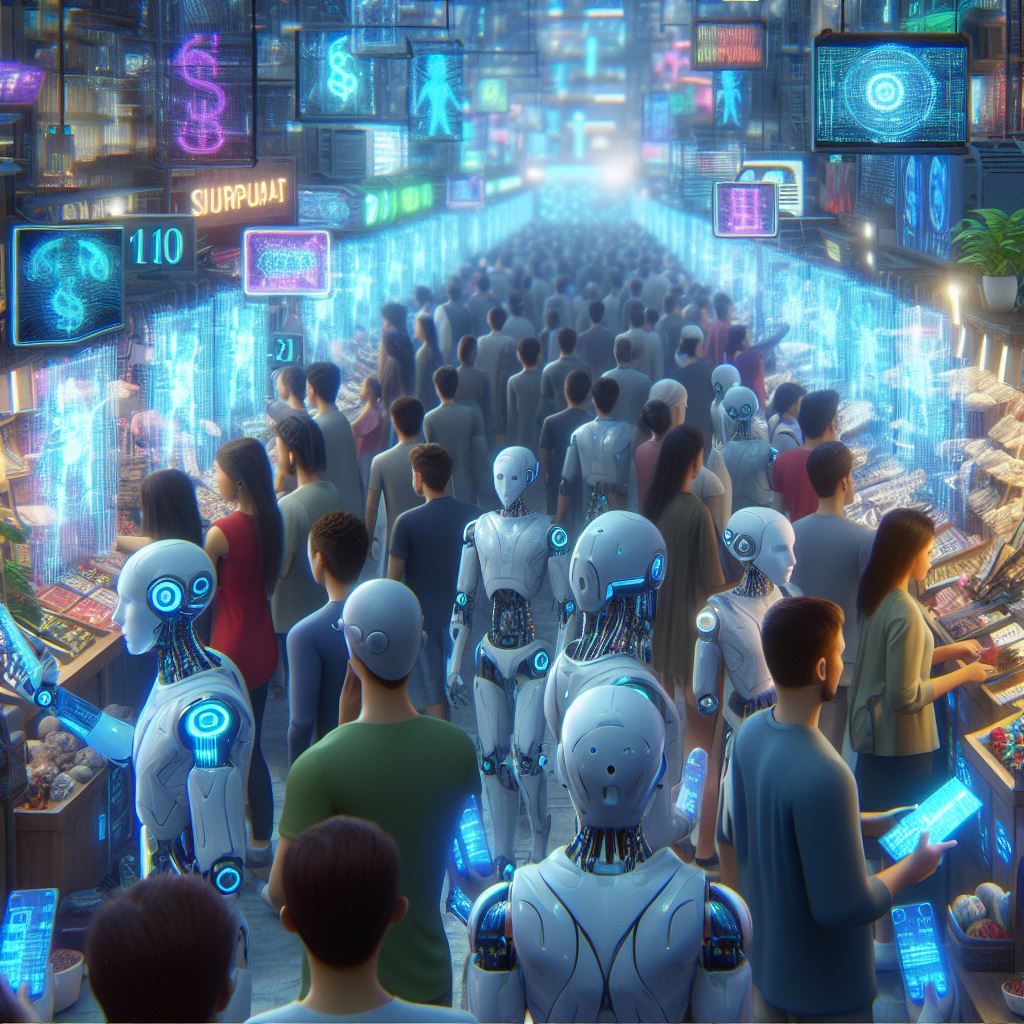The humanoid robot market is on the cusp of transformative growth, driven by advancements in robotics, artificial intelligence, and machine learning. These robots, designed to mimic human appearance and behaviour, are finding applications across various sectors, from healthcare and education to customer service and entertainment. This article explores the future of the humanoid robot market, highlighting key trends, challenges, and opportunities shaping its trajectory.
The humanoid robot market size is valued at USD 1.8 billion in 2023 and is anticipated to be USD 13.8 billion by 2028; growing at a CAGR of 50.2% from 2023 to 2028. The key factors contributing to the growth of the humanoid robot market include the increasing use of humanoids as educational robots and the surging demand for humanoid robots from the retail and household as personal assistance.
Key Trends Shaping the Humanoid Robot Market
- Technological Advancements:
- Enhanced AI and Machine Learning: Recent advancements in artificial intelligence (AI) and machine learning are significantly improving the capabilities of humanoid robots. These technologies enable robots to better understand and interact with their environment, process natural language, and exhibit more lifelike behaviors.
- Improved Robotics Hardware: Innovations in robotics hardware, including advanced sensors, actuators, and materials, are enhancing the dexterity, stability, and functionality of humanoid robots. This progress allows for more complex movements and interactions.
- Human-Robot Interaction (HRI): Enhanced HRI technologies, such as speech recognition, facial recognition, and emotional intelligence, are making humanoid robots more effective in understanding and responding to human emotions and commands.
- Expanding Applications:
- Healthcare and Elderly Care: Humanoid robots are increasingly being deployed in healthcare settings to assist with patient care, perform routine tasks, and provide companionship to the elderly. These robots can help reduce the burden on healthcare professionals and improve patient outcomes.
- Customer Service and Hospitality: In the service industry, humanoid robots are being used for roles such as receptionists, concierges, and tour guides. Their ability to engage with customers and provide information in a friendly manner enhances the overall customer experience.
- Education and Training: Humanoid robots are being utilized as educational tools to teach subjects such as robotics, programming, and languages. They offer interactive learning experiences and can assist in training scenarios for various professions.
Download PDF Brochure @ https://www.marketsandmarkets.com/pdfdownloadNew.asp?id=99567653

- Market Growth and Investment:
- Increasing Investment: Significant investment in research and development is driving innovation in humanoid robots. Both private companies and government agencies are funding projects to advance robotic technology and expand its applications.
- Market Expansion: The humanoid robot market is expected to grow substantially in the coming years. Factors such as rising demand for automation, advancements in technology, and increasing adoption across industries contribute to this growth.
Challenges Facing the Humanoid Robot Market
- High Development Costs:
- Research and Development: The development of humanoid robots involves substantial research and development costs, including those associated with hardware, software, and testing. These high costs can be a barrier to entry for new companies and limit the affordability of robots for some sectors.
- Technical Limitations:
- Complexity of Human Mimicry: Despite advances, replicating human movements and behaviors with high fidelity remains a challenge. Achieving seamless human-robot interaction and ensuring that robots can handle a wide range of tasks effectively are ongoing technical hurdles.
- Ethical and Social Concerns:
- Impact on Employment: The increasing use of humanoid robots raises concerns about their impact on employment, particularly in roles that robots might replace. Addressing these concerns and finding ways to integrate robots into the workforce responsibly is crucial.
- Privacy and Security: As humanoid robots become more integrated into daily life, issues related to privacy and data security become more prominent. Ensuring that robots handle sensitive information responsibly and securely is a key challenge.
Opportunities in the Humanoid Robot Market
- Integration with AI and IoT:
- Smart Environments: Integrating humanoid robots with AI and the Internet of Things (IoT) can create smart environments where robots work alongside other connected devices to enhance efficiency and functionality. This integration offers opportunities for creating intelligent, adaptive systems in various settings.
- Global Market Expansion:
- Emerging Markets: As technology becomes more accessible and affordable, there are significant opportunities for expanding the use of humanoid robots in emerging markets. Regions such as Asia-Pacific and Latin America present growing demand for robotic solutions in healthcare, education, and service industries.
- Personalized Robotics:
- Custom Solutions: Developing customizable humanoid robots that can be tailored to specific needs and preferences offers new opportunities. For example, robots designed for particular tasks in specialized fields or with customizable features for individual users could open up new market segments.
- Collaboration with Other Technologies:
- Enhanced Functionality: Collaborating with technologies such as augmented reality (AR), virtual reality (VR), and wearable devices can enhance the functionality and appeal of humanoid robots. These collaborations can lead to innovative applications and user experiences.
The future of the humanoid robot market is bright, with substantial growth potential driven by technological advancements and expanding applications. While challenges such as high development costs, technical limitations, and ethical concerns remain, opportunities for innovation and market expansion abound. As humanoid robots continue to evolve and integrate into various aspects of daily life, they promise to play a significant role in shaping the future of automation, interaction, and human-robot collaboration.
